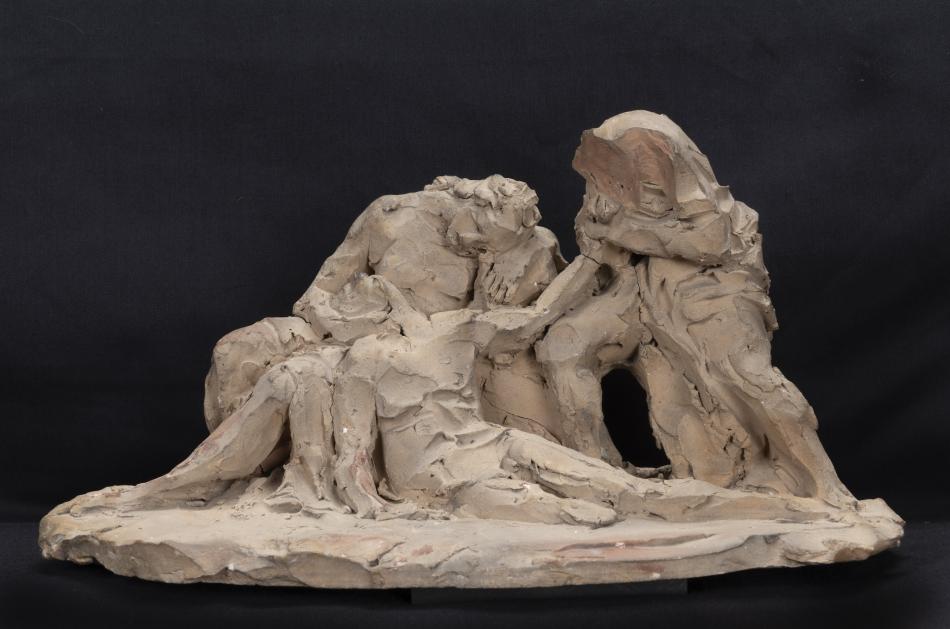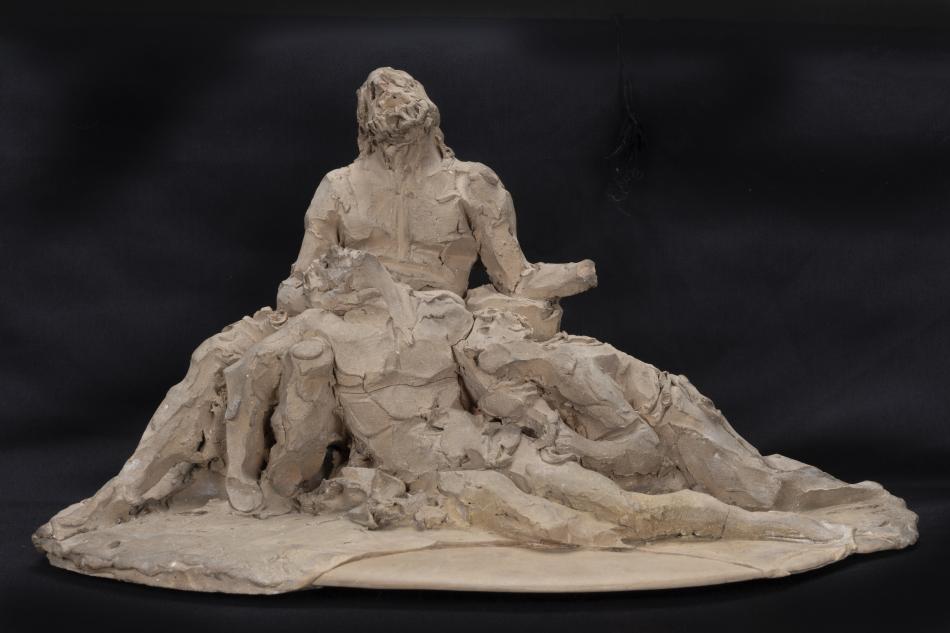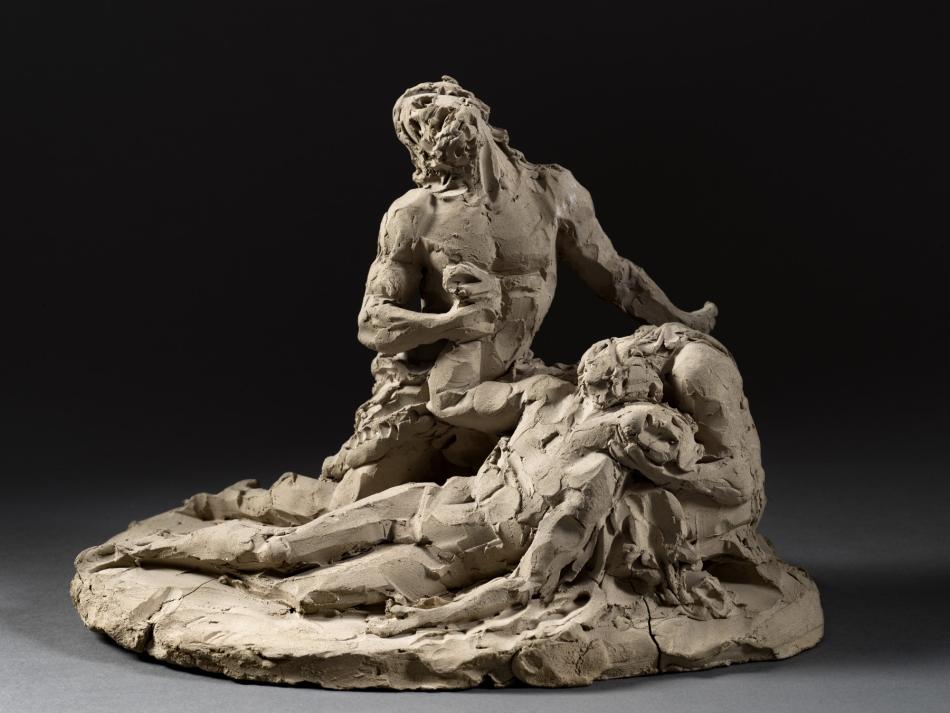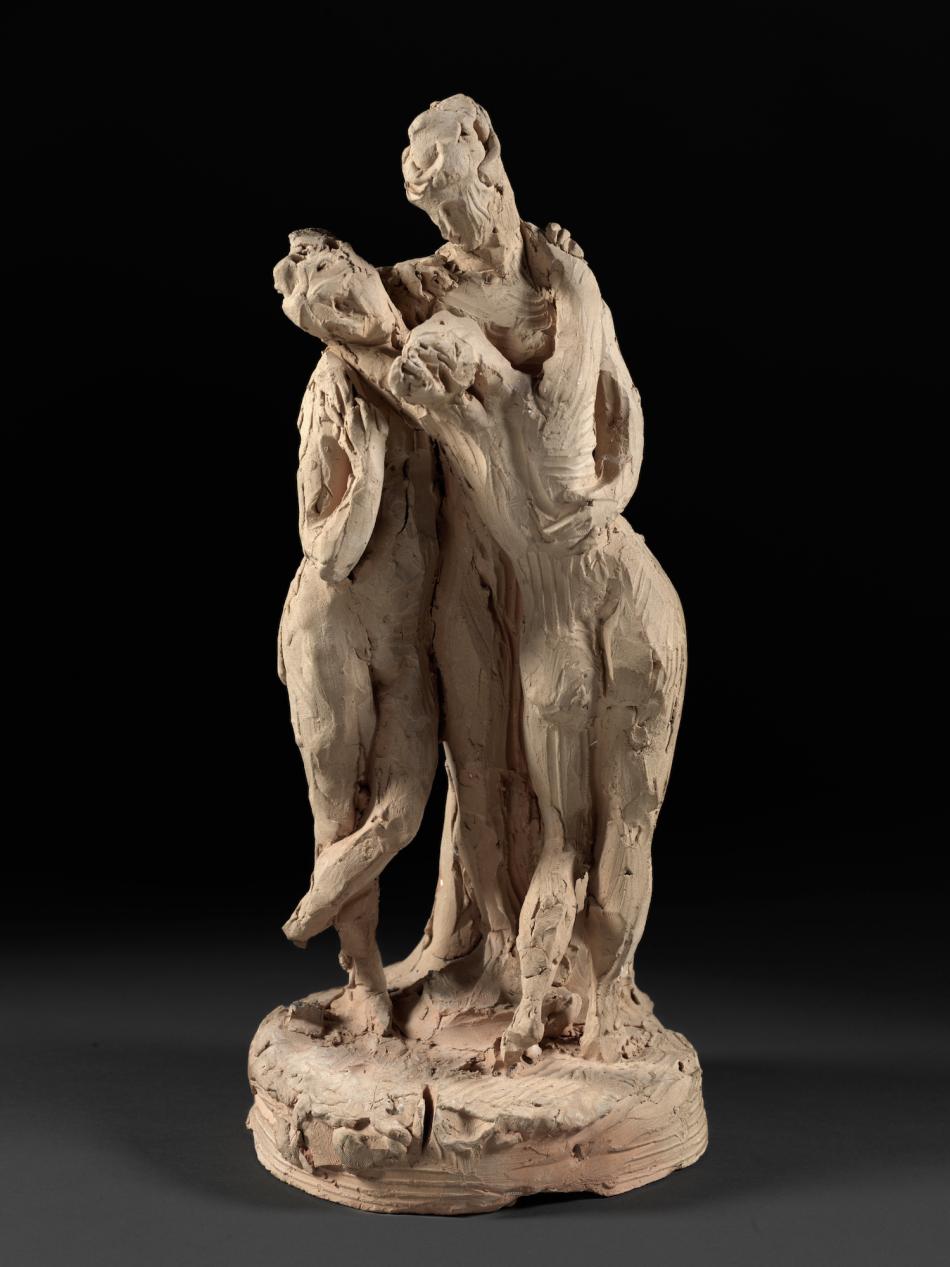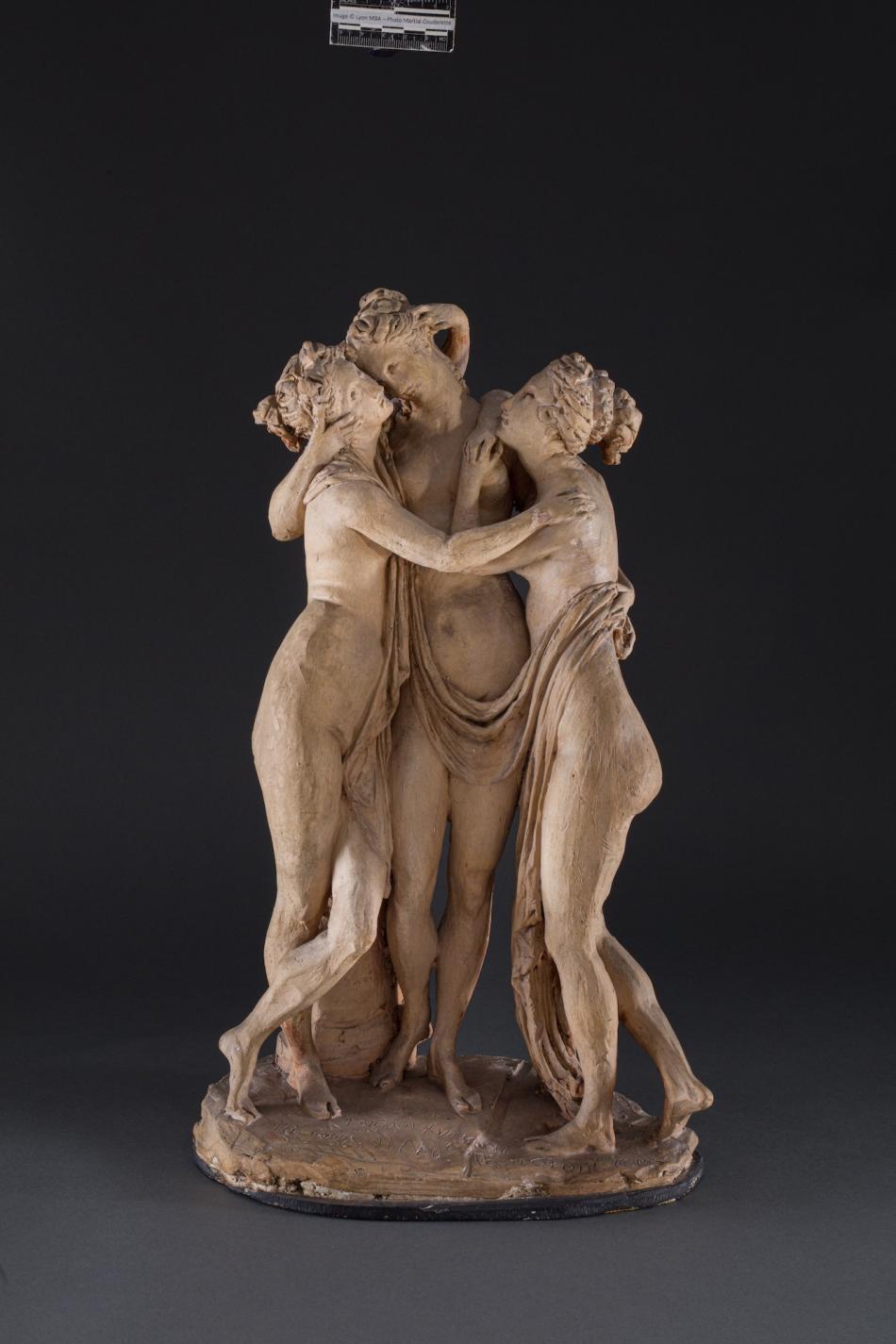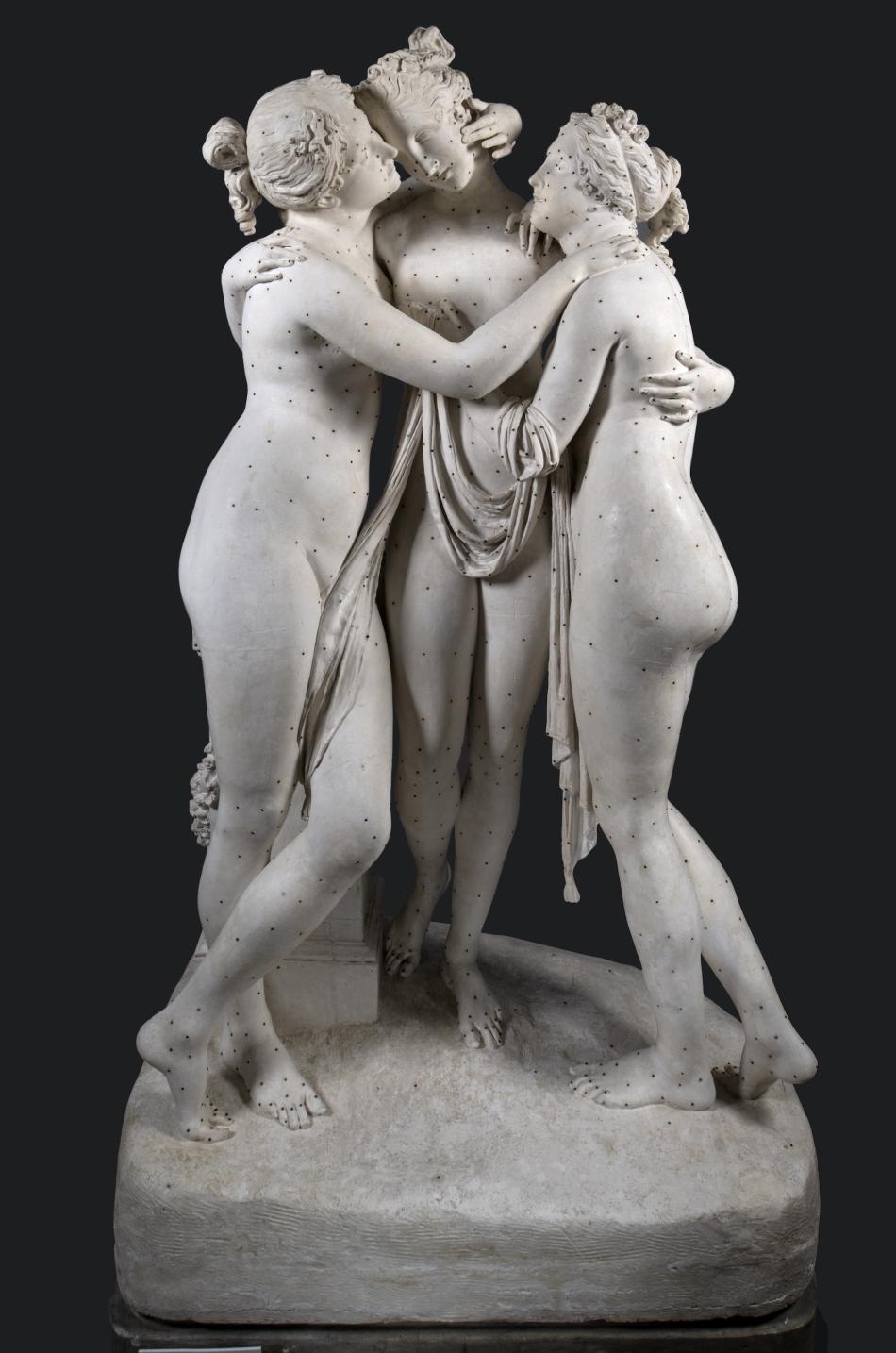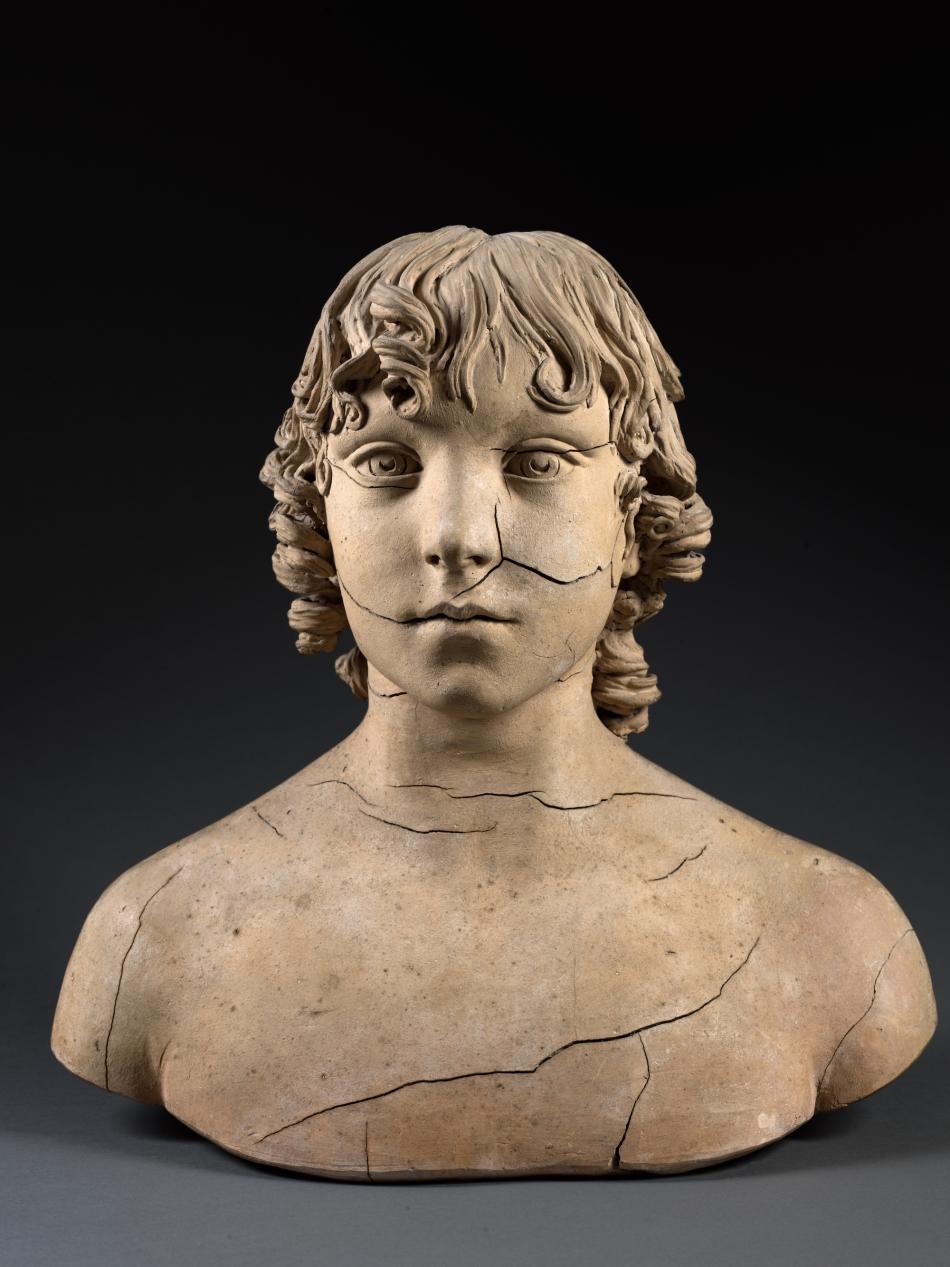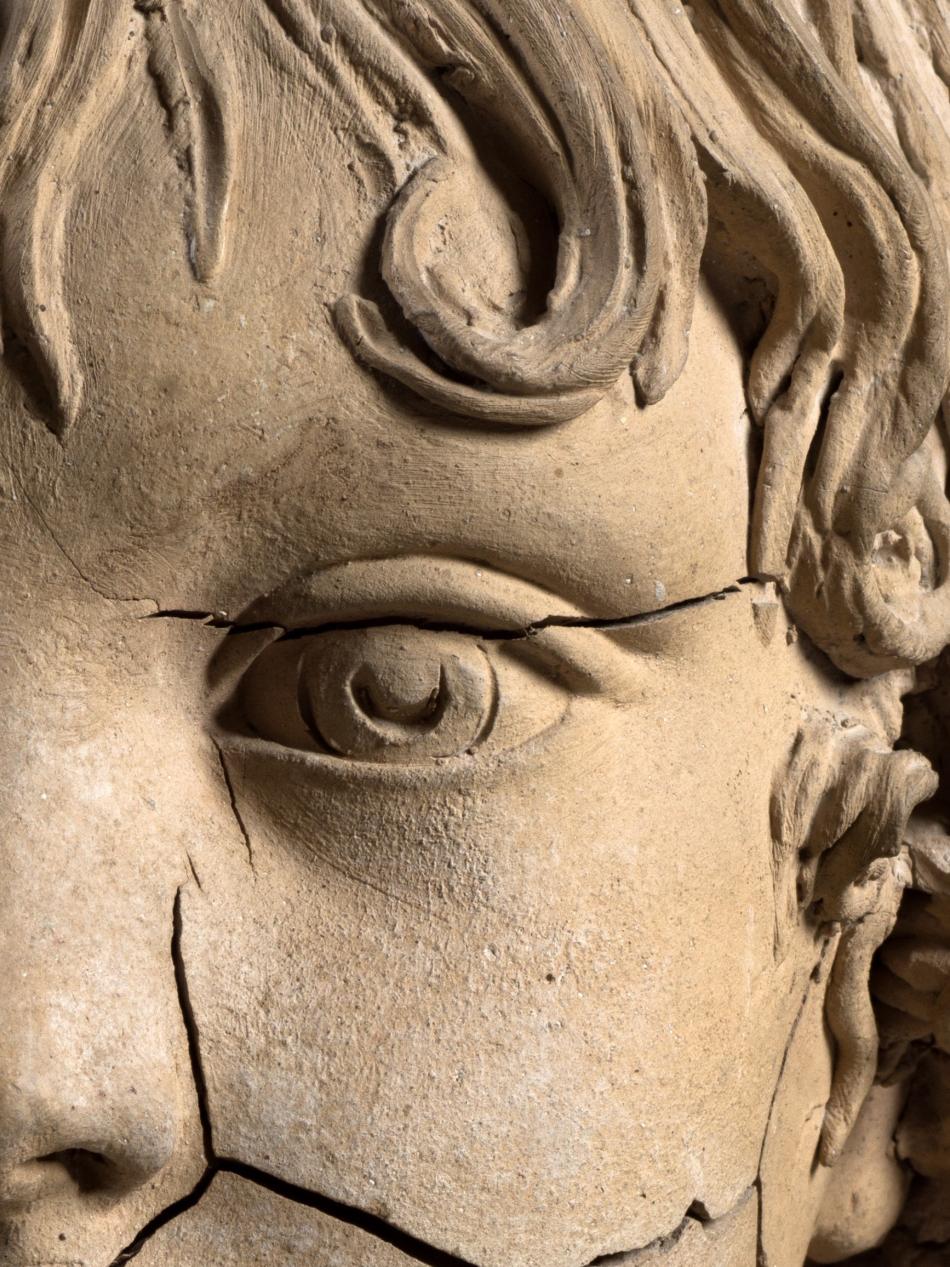Who Is Antonio Canova? 10 Things to Know
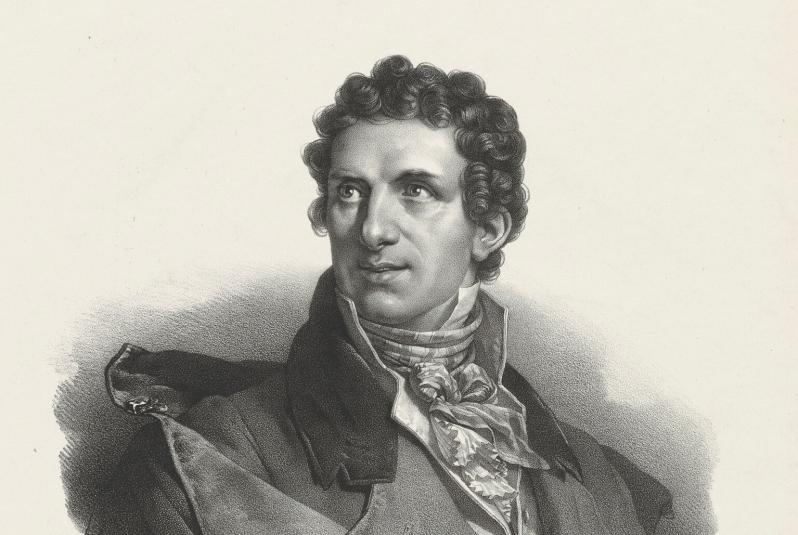
Antonio Canova—one of the greatest sculptors of Napoleon’s era—could breathe life into stone. But how did he do it? In his studio in Rome, Canova worked out ideas in clay before producing them at full size in marble. Rough and rapidly made, these expressive clay “sketches” show an important side of his creativity. And his creative designs and skilled carving drove demand for his marble sculptures across Europe.
1. Canova sculpted from a young age.
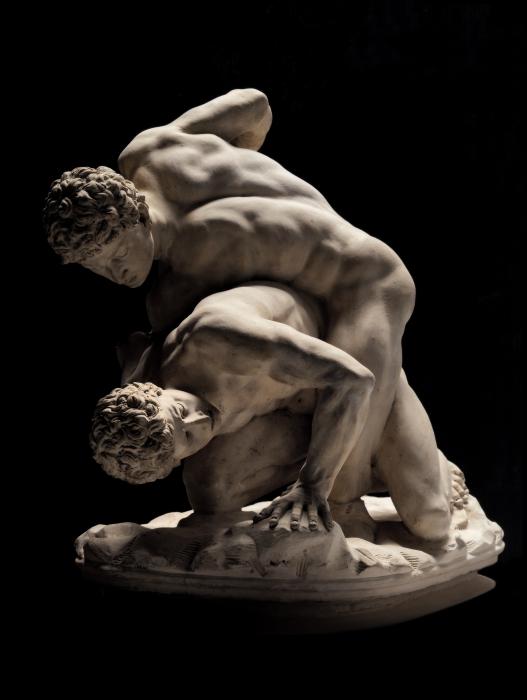
Antonio Canova, The Wrestlers, 1775, terracotta, Gallerie dell’Accademia, Venice
Canova was born in 1757 in Possagno, Italy. His father and grandfather were sculptors and stonecutters. Canova apprenticed to a Venetian sculptor at 11 years old and attended the Accademia di Belle Arti (fine arts academy) in Venice from about 17.
One of his models placed second in a competition at the Accademia in 1775, when he was 18.
2. Canova set off for Rome by the time he was 21.
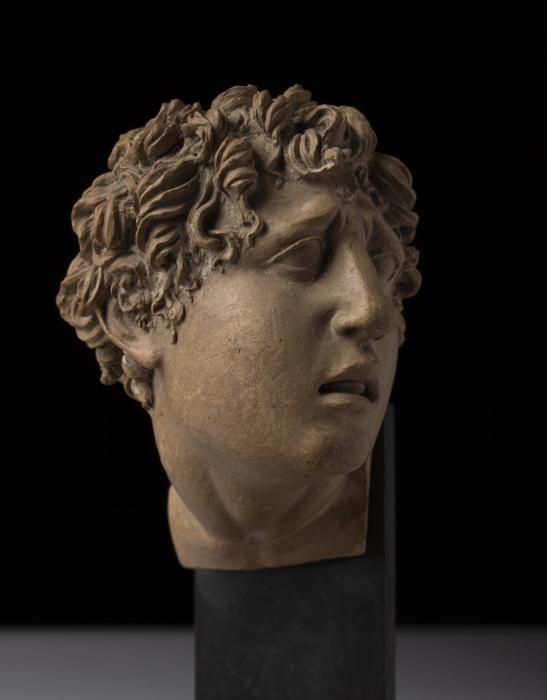
Antonio Canova, Character Head, c. 1780, terracotta, Dino and Raffaello Tomasso
He sculpted in clay on his way to Rome. For example, he modeled the head of a young friar—but he lost that model when switching boats.
In Rome, Canova often visited the art academies. He completed a model at one, but dropped it on the stairs going up to his room that night. “And such,” he wrote in his journal, “is how the day ended.”
Other entries tell us that he would return to his room before lunch and prepare some clay so that it was always ready to go—whether to model at the academies or in his room at night after dinner.
Modeling in clay was an early and instinctual part of his practice. He called it “inventing.” This model of an expressive head is one of Canova’s early works in Rome.
3. Canova’s clay sketches give us a sense of his process.
Canova’s large, famously polished marble sculptures began as small clay models. While he also made drawings, Canova clearly recognized the advantages of clay. Bold, expressive, and fully in the round, the models show his process and his imagination at work.
When Canova wanted to try out a new idea, he simply started over. The clay models of his electrifying Adam and Eve Mourning the Dead Abel show that he repositioned the grieving parents.
In a third version, he sculpted them from one piece of clay set at the heart of the composition. Every gesture and expression shows their pain.
Canova made these sketches just before his own death. He never executed them in marble.
4. Canova worked in clay, terracotta, plaster, and finally marble.
Dancers are caught midtwirl in an early sketch for Three Graces—note the outflung head. They strike a more dignified pose in a later version. Models of the dancers in terracotta (fired clay) were copied in plaster and then translated into marble.
Canova fired, or baked, many of his clay studies in an oven called a kiln. He surely made hundreds of models, but they break easily and only some 60 survive. Canova almost never parted with his terracottas—keeping them to remember past projects and plan future ones.
Once finalized, a design was sized up and copied in plaster, which he and his assistants translated into marble.
5. Canova used pointing to get from clay to marble
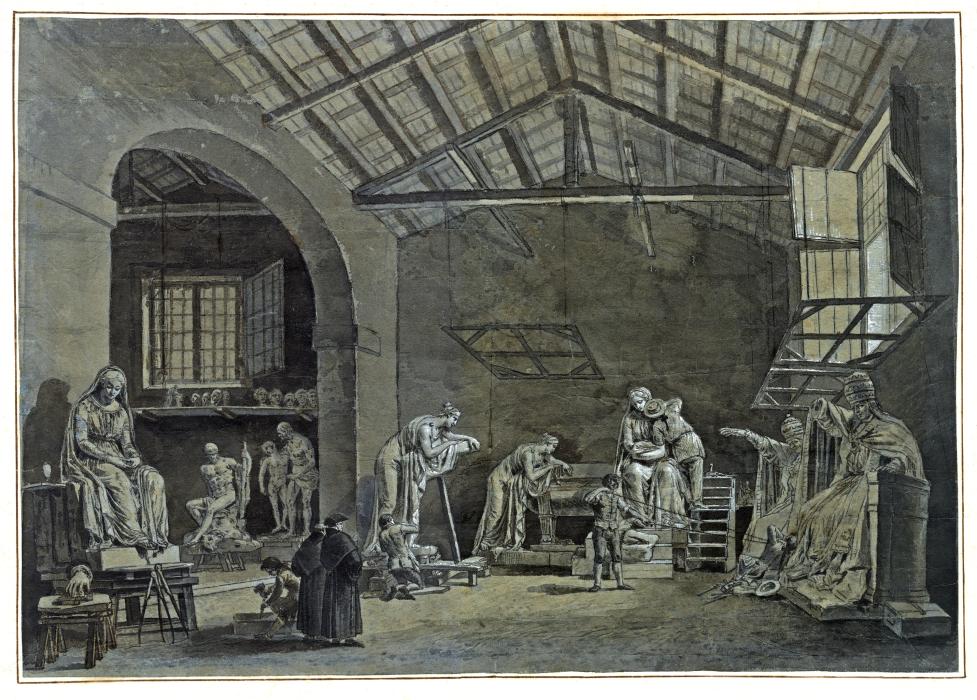
Francesco Chiaruttini, View of Antonio Canova’s Studio in Rome, 1786, pen and wash, Civici Musei, Udine
To transfer a design to marble, Canova relied on studio assistants, measuring tools, and a mechanical system called pointing. Black dots on the plaster model served as fixed points that Canova and his assistants transferred, through careful and precise measuring, to the same positions on a rough marble block. Many sculptors still use this method today.
Here is Canova’s studio in operation, with assistants at work and frames suspended above his full-scale model, and marble, of Pope Clement XIV.
6. Canova closed with a personal touch.
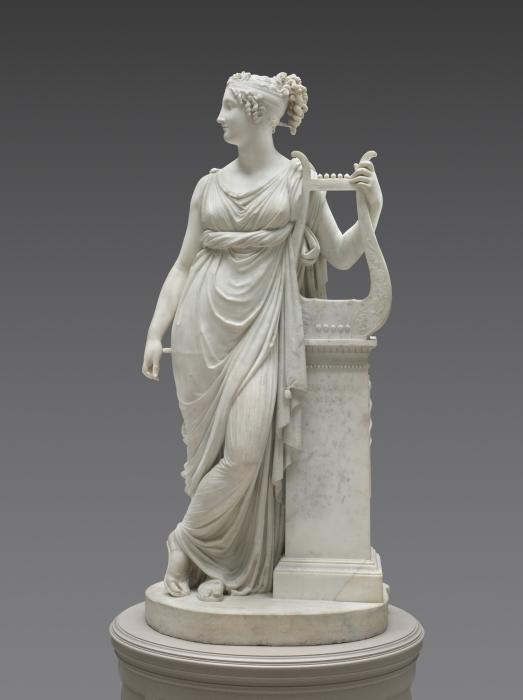
Antonio Canova, Terpsichore Lyran (Muse of Lyric Poetry), c. 1814–1816, marble, The Cleveland Museum of Art, Leonard C. Hanna, Jr. Fund
Canova’s treatment of surface was legendary. He insisted on applying his final touch personally. After assistants had roughed out a model in marble, Canova obsessively worked the stone’s surface himself. Using “kisses and caresses” (as one friend wrote) to reveal a figure, he seemed to translate the soft pliability of clay to marble. Pressing into it rather than chipping away, he made cold hard stone look like warm supple flesh. It is why his marble statues are so incredibly lifelike; it is why they rival famous works from ancient Greece and Rome.
We can see the different textures Canova created: ringlets of hair, a smooth face. He even made the flowing folds of the dress (chiton) look like a rougher fabric than the smoothly twisted belt around the muse’s waist.
7. Canova sometimes perfected his clay studies, too.
Many of Canova’s clay studies were also highly finished. His sensitive portrayal of a boy is a rare and wonderful example. Still, the first thing we notice is the network of cracks running all over it.
So, what happened? Did it crack as it dried unevenly in the hot sun? Or was it fired in a kiln before it was completely dry? The moisture in the still-damp clay would have become steam, forcing its way out under pressure at weak points and cracking it. Or was it the uneven thickness of the clay?
Canova never parted with this bust, but why he kept it is a mystery.
8. Canova’s sculptures were in demand.
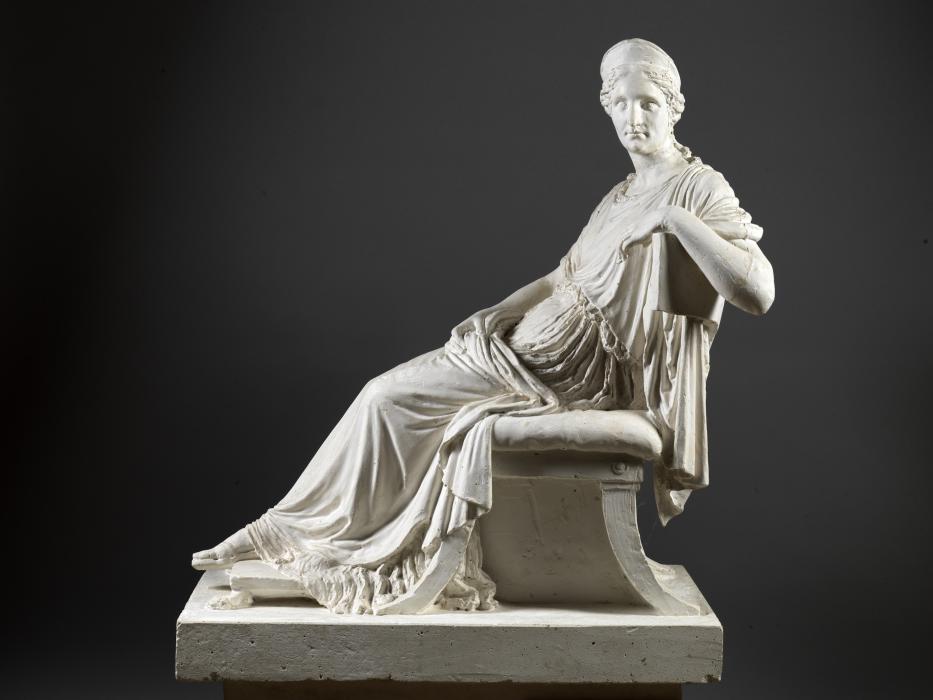
Antonio Canova, Madame Mère (Letizia Ramolino Bonaparte), c. 1805, plaster, Museo Gypsotheca Antonio Canova, Possagno, photographed by Luigi Spina
The rich and powerful of Europe—including Napoleon, his mother, and his ex (the former empress Josephine)—all wanted marble sculptures by Canova. He did not disappoint, working feverishly to satisfy the demand.
In Rome, his busy workshop bustled with assistants and tourists eager to catch a glimpse of the artist and his works. His celebrity grew as his marbles spread through Europe and beyond. One even crossed the Atlantic Ocean: George Washington headed for the statehouse in Raleigh, North Carolina, aboard an American warship in 1821.
9. Canova portrayed powerful women.
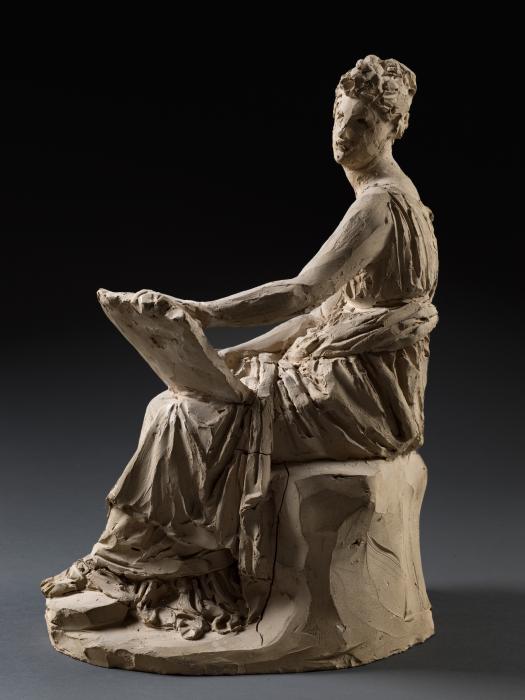
Antonio Canova, Princess Leopoldina von Esterházy, c. 1805–1806, terracotta, Museo Gypsotheca Antonio Canova, Possagno, photographed by Luigi Spina
Canova sculpted many influential women, including Princess Leopoldina von Esterházy. She was a political adviser to Marie Antoinette’s oldest brother, Joseph II (who ruled the Holy Roman Empire, including parts of Germany, Italy, and central Europe, from 1765 to 1790).
Von Esterházy was part of a salon—a regular gathering of artists and elites—that was headed by a woman and included several others. She was also an artist, as we see from the sketchbook she holds in this model.
10. Canova’s final resting place is Possagno—and Venice.
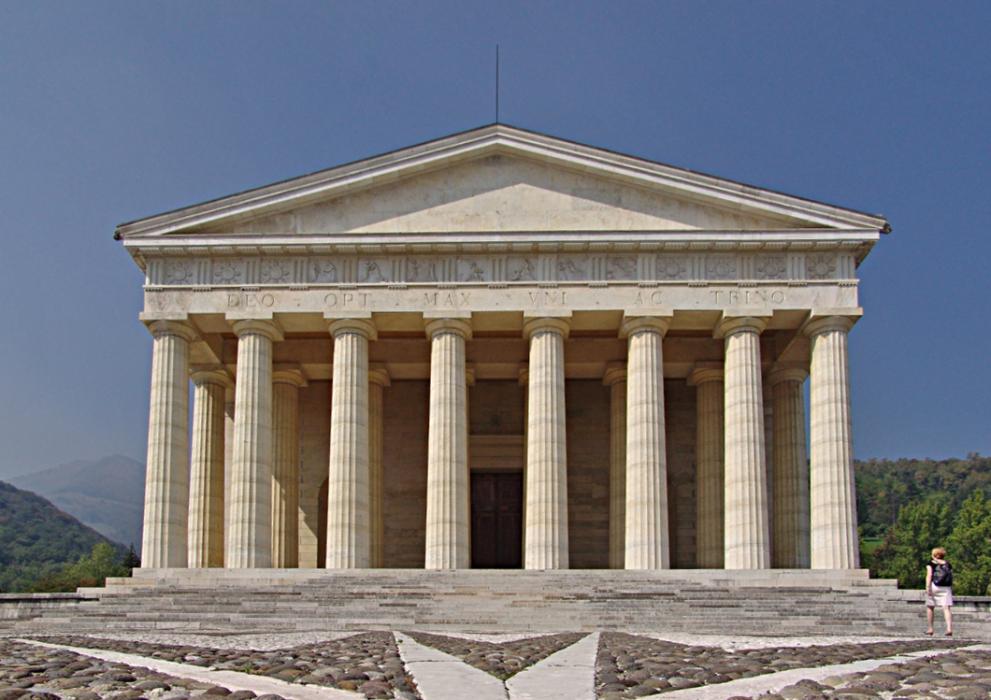
Exterior of Tempio Canoviano, Possagno, Italy, photo by Philip Schäfer via Wikimedia Commons CC BY-SA 3.0
Canova spent his final years designing and constructing a church in his hometown of Possagno. Canova died on October 13, 1822, before the Tempio Canoviano, as it is known, was completed.
His body rests in the Tempio while his heart is buried at a church in Venice. His right hand—the one he used to carve his sculptures—is preserved in a vase in the Venetian art academy where he first studied.
You may also like

Article: Smithsonian Scientists on How Artists Depicted Five Curious Creatures
Staff at the National Museum of Natural History helped us identify the animals and insects in our collection.

Article: What Is the Black Arts Movement? Seven Things to Know
Learn how the "cultural revolution in art and ideas" celebrated Black history, identity, and beauty.



